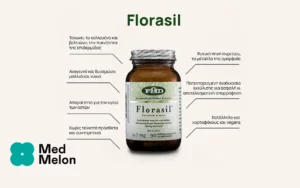Scientific Names of Calamus:
Acorus calamus L. [Fam. Araceae]
Forms:
Cut and dried or powdered root and/or rhizomes of sweet flag; volatile oil extract of sweet flag root.
Traditional Usage:
– Appetite loss
– Bitter Tonic
– Bronchitis
– Chest Pain
– Colic
– Cramps
– Diarrhea
– Digestive Disorders
– Flatulence
– Gas
– Indigestion
– Nervous Disorders
– Rheumatism
– Sedative
– Vascular Disorders
Overview:
Sweet Flag Root, Acorus calamus L. [Fam. Araceae], also known as calamus root, Acorus, Cinnamon Sedge and Sweet Myrtle, is a semiaquatic, perennial plant that grows along lakes and rivers and in muddy swamps and meadows. According to Dr. James Duke in the CRC Handbook of Medicinal Herbs, the plant has a long history of use dating back at least 4000 years as a product of commerce in the Near East. The leaves and root can be used to isolate oil of calamus, used in perfumes, hair products and many liqueurs for flavoring. Reputedly, the root was also coated with sugar and used as candy and breath freshener in the past. Calamus originated in India, Central Asia, and Eastern Europe but now grows all over the world. Sweet Flag Root has a strong aroma and a pleasing but bitter taste. Although it is most often used to relieve stomach problems such as cramps, colic, indigestion, appetite loss, and gas, it is also has a calming or relaxing effect and was prescribed in traditional medicine for nervous disorders. As a bath additive it helps with circulation and rheumatism and as a mouth rinse it is given for gum disease and other mouth conditions. Also used for bronchitis and chest pain or angina. Calamus root also has anti-diarrheal activity based on animal studies. Experimentally, asarone extracts of calamus root have quite diverse biological activity–tranquilizing, sedative, antiulcer, spasmolytic and antisclerosing. In its pharmacological properties, asarone from calamus is identical with asarone obtained from two other plants, Asarum europaeum and Guatteria. Beta-asarone, an effective insecticide, is a known carcinogen. American diploid strains of calamus are recommended for internal use as they do not contain beta-asarone. Studies have shown that oils devoid of beta-asarone showed spasmolytic properties comparable to those of standard anti-histaminic drugs.
Active Ingredients:
Calamus root contains: Essential oil containing many sesquiterpenes and phenylpropanes (dry European roots contain between 0.9-4.8%; Japanese material up to 5% oil; powdered material as low as 0.5%; and tetraploid roots may contain as much as 7% oil), Cis-Isoasarone (b-asarone otherwise known as safrole) often together with eugenol methyl ether (80%), bitter substances (acorone, a sesquiterpene diketone with a spiran structure); ketones (shyobunones), tannins, mucilage, resins and small starch grains. Oil from dried rhizomes of an Indian specimen yielded 2.8% oil that contained: 82% asarone; 5% calamenol; 4% calamene; 1% calameone; 1% methyleugenol and 0.3% eugenol. Two bitter principles, acorin and acoretin, are also reported. [Duke JA. 1985. Acorus calamus L. In CRC Handbook of Medicinal Herbs. CRC Press, Boca Raton, FL, p. 14-15].
Suggested Amount:
Tea: Pour boiling water over 1-1.5 grams of finely chopped or coarsely powered sweet flag root. Steep 3-5 minutes then strain. Drink at mealtimes. 1 Teaspoon = ca. 3 grams.
Bath: Add 250 to 500 grams to bathtub.
Drug Interactions:
None known.
Contraindications:
None known.
Side Effects:
Cis-Isoasarone (beta-asarone) has cancerogenic and mutagenic or chromosome-damaging properties. Therefore it is best to use the American drug with does not have Cis-Isoasarone. Oil of calamus root is toxic to many insects and is used as an insecticide and insect repellent, including on crops; even the oil vapors are effective and have been shown to sterilize certain insect species through preventing ovary development.
References:
Belova LF, Alibekov SD, Baginskaia AI, Sokolov SIa, Pokrovskaia GV. 1985. [Asarone and its biological properties]. Farmakol Toksikol. 1985 Nov-Dec; 48(6):17-20. Russian.
Molochko VA, Lastochkina TM, Krylov IA, Brangulis KA. 1990. [The antistaphylococcal properties of plant extracts in relation to their prospective use as
therapeutic and prophylactic formulations for the skin] Vestn Dermatol Venerol. 1990; (8): 54-6. Russian.
Panchal GM, Venkatakrishna-Bhatt H, Doctor RB, Vajpayee S. 1989. Pharmacology of Acorus calamus L. Indian J Exp Biol. 1989 Jun; 27(6): 561-7.
Shoba FG, Thomas M. 2001. Study of antidiarrhoeal activity of four medicinal plants in castor-oil induced diarrhoea. J Ethnopharmacol. 2001 Jun; 76(1): 73-6.
Wichtl M (ed). 1994. Calamus root. In Herbal Drugs and Phyto-pharmaceuticals. (English translation by Norman Grainger Bisset). CRC Press, Stuttgart.




